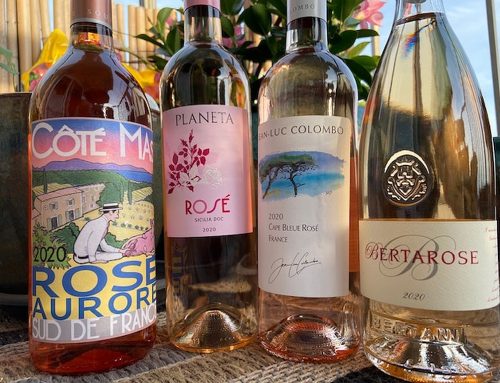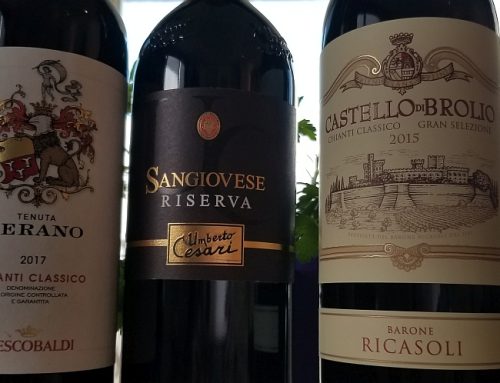If you’ve ever prepared a nice dinner of liver and fava beans and wondered, “What would Hannibal Lecter do?,” here’s your answer: He’d pour a glass of the 2006 Carpineto Chianti Classico Riserva.
In 1967, winemakers Giovanni Sacchet and Antonio Zaccheo joined forces and purchased the Carpineto vineyard from the local church near Greve in Chianti, an important town in Tuscany’s Chianti Classico zone. Carpineto derives its name from the Greek word “carpos”, meaning fruit, which grows abundantly on vines and trees in the area.
Sacchet hails from northeast Italy and Zaccheo from Apulia, the heel of Italy’s boot. At the outset, they made wine from their vineyard and from grapes from neighbors. By the 1980s, these two non-Tuscans were producing some of that region’s best value wines from Carpineto grapes.
A few weeks ago, Zaccheo’s son, also named Antonio, visited New York to present Carpineto’s newest wines. We began the tasting with Carpineto’s Dogajolo Bianco, a blend of chardonnay, sauvignon blanc and grechetto from hillside vineyards in various areas of Tuscany. Sacchet’s winemaking offers consumers a refreshing white wine for an aperitif and informal summer meals.
We progressed to Carpineto’s 2005 Vino Nobile di Montepulciano Riserva and 2006 Chianti Classico Riserva. Sacchet understands that sangiovese, the principal grape of Tuscany, is delicious when its exposure to new French oak barrels and cabernet sauvignon or merlot is limited.
The 2006 Chianti Classico Riserva follows the traditional path of blending sangiovese with canaiolo, Tuscany’s other important red wine grape. Sacchet employs time-honored Slavonian casks and used French oak barrels for aging. His method yields a medium-bodied wine with pleasant rose hip and black cherry aromas. The 2006 Carpineto Chianti Classico Riserva glides across the palate with a delightful black cherry and raisin-y taste. Its tannins are folded into the ripe fruit, and the acidity cleanses the palate.
The 2005 Vino Nobile di Montepulciano Riserva shares the velvety texture of the 2006 Chianti Classico Riserva, but and it has a little more black fruit aroma and flavor.
Along with the current wines, we tasted the 1990 Chianti Classico Riserva and 1988 Vino Nobile di Montepulciano Riserva. Both showed how well Carpineto’s wines age. Sacchet’s winemaking style captures the essence of Tuscan red wines.
At the tasting and dinner at Il Gattopardo restaurant in Manhattan, I opted for a rack of lamb with Carpineto’s 2006 Chianti Classico Riserva. But that liver would also be delightful with this nice chianti.
The 2006 Carpineto Chianti Classico Riserva retails for approximately $23.








Leave A Comment